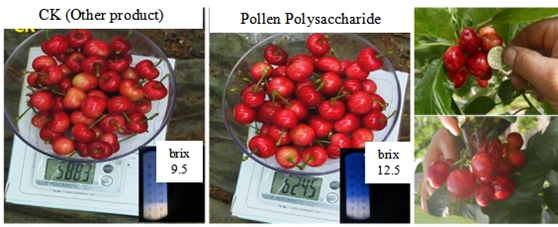The Benefits of Underutilized Chemistry in Mint: Everything Old Is New Again
“Sooner or later, everything old is new again.” This quote, from Stephen King’s novel “The Colorado Kid,” has never been truer than in the use of herbicides in commercial and family farming. Certain weed pests – various strains of pigweed in particular – have begun to show resistance to currently popular post-emergent herbicides.
For farmers, the solution to combating these stubborn weeds has been a return to underutilized chemicals that predate relatively new treatments.
One such underutilized active ingredient is pyridate, a technology developed in the late 1990s. With growing reports across the U.S. of pigweed resistance to established formulations, farmers and regulators have begun to turn back again to previous treatments to handle weed infestation. (This is especially true for mint farmers, for whom the presence of pigweed in mint oil can result in price discounting from mint brokers or shipments being returned altogether.)
Consequently, pyridate has been reintroduced gradually to farmers. The EPA recently granted use of pyridate for a limited period under its Section 18 Emergency Use Exemption to the Federal Insecticide, Fungicide, and Rodenticide Act (FIFRA). The act gives the EPA authority to allow emergency exemptions for unregistered uses of pesticides to address emergency conditions.
It’s an indication of how pervasive herbicide-resistant pigweed and other broadleaf weeds has become that the EPA has turned again to a solution such as pyridate to control its infestation. For some farmers, the “old” chemistry has had impressive new results.
Preserving the Cash Value of the Yield
Setniker Farms is a large commercial farming operation located in Independence, OR, Depending on the season, Setniker Farms raises as many as a dozen different crops. According to Scott Setniker, mint is one of his largest crops.
Since its Section 18 designation, Setniker Farms has used pyridate for post emergence weed control in double cut mint. Pyridate has been extremely effective, Setniker said, at controlling pigweed as well as other broadleaf weed varieties.
Controlling weeds in the mint harvest is absolutely essential to the financial well-being of Setniker Farms, he explained. When mint is harvested, it is sent to Setniker’s customers who pull out samples and analyze them for residues and break down the analyzed samples by components — oil level, menthol and menthone, for example.
Odor tests are also performed at that time. “The presence of weeds in a sample will actually give off a ‘weedy’ smell,” Setniker said. His customers cannot tolerate that, Setniker noted, because it can discolor the mint and degrade the quality. “If it’s bad enough they may discount you severely,” he added.
Setniker Farms has relied on the same herbicides for many years and has begun to see issues in its mint crops, where certain weeds have built up resistance to those applications. “Pigweed, for example, used to be controlled by some other herbicides, but not so much anymore,” said Setniker. Adding pyridate to the rotation, Setniker said weed control has improved “from 50-80% previously, to 95% or even 100% control today.”
While introducing pyridate to the regimen has improved the quality of the mint crop, it also has improved yield. With an effective herbicide spray regimen on a field otherwise infested with pigweed, Setniker has “definitely seen yield increase over existing treatments.”
Protecting an 80-year Farming Legacy
Shady Lane Farms General Partnership in South Bend, IN, is a family farm of approximately 5,000 acres. According to farmer Randy Matthys, his great-grandfather started farming around 1929, and moved the operation to the current Shady Lane location in 1938. Today, about 30% of Shady Lane’s total acres are devoted to mint.
Matthys uses a number of pre-emergent and post-emergent herbicides for broadleaf weed and grass control. While some of the pre-emergent treatments are effective, Matthys said, he has opted against their use because they can cause crop injury.
Shady Lane used pyridate as far back as the late 1990s and early 2000s, Matthys noted. He was relieved when pyridate was authorized for emergency purposes by the EPA.
Multiple weed species can be problems for Shady Lane Farms, including pigweed, waterhemp, lambsquarters, and marestail, Matthys noted. His opinion echoes Setniker’s on the importance of effective weed control on the quality of mint oil. If weeds end up in mint hay, Matthys noted, they can “carry off-notes into the oil,” which can cause buyers to discount the price of the oil, or in some cases reject it altogether.
Matthys said he learned how to use other products once his original pyridate treatment was no longer available in the 2000s. He is pleased to find ways to incorporate the herbicide again into Shady Lane’s crop protection program. Pyridate’s Section 18 approval came late in Matthys’ season last year, so it was used in a “rescue” capacity in July, applied to the second cut or to keep fields clean, he said.
Matthys noted that pyridate’s effectiveness is a compelling business benefit. “If you control weeds, you will see an increase in yield,” he said.
Rules of Thumb in Application
While pyridate is helping farmers improve the quality and the yield of their crops, success demands a regimented application strategy.
According to Setniker. “The most important thing to remember is to get it on early, when the weed leaves aren’t too big. I aim to apply it when weeds are at about six inches high. You will see nearly 100% control if you apply it early enough,” he said.
For Matthys, application would ideally begin the last week of May through June, and possibly into early July – at least 30 days prior to harvest, noting that the chemical is particularly effective on smaller weeds.
While pyridate is effective in mint farming, Matthys is also interested in broader uses of the product for other crops, such as corn. “It’s always good to have another tool in the shed to fall back on,” he explained.
With full EPA registration pending for pyridate, time will soon tell whether farmers will see the same benefits for other crops that have been realized in mint fields across the country. Certainly, where mint is concerned, the use of the underutilized active ingredient pyridate remains a decades old answer to a relatively new problem.






